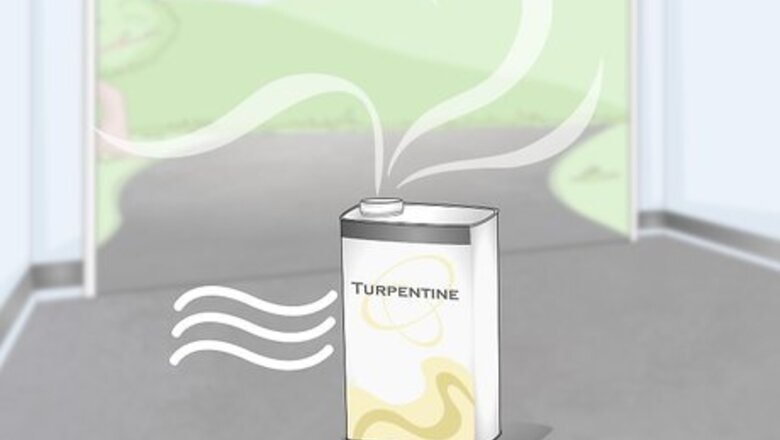
views
Disposing of a Container of Turpentine
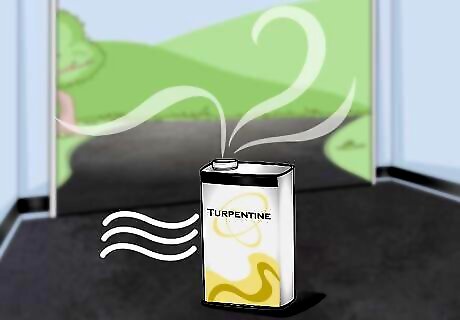
Allow an almost empty container of turpentine to evaporate in a well-ventilated area. If you have a container of turpentine that only has about ⁄4 inch (0.64 cm) of turpentine left in it, the easiest way to dispose of it is to let the turpentine evaporate. Open the container and place it in a cool, well-ventilated space that is not near any flames or heat sources. This could be done outside or in a garage with the garage door open, for example. Allow the container to sit out until the turpentine has all evaporated, which could take several hours depending on how much was in the container. Once you have let it evaporate in a well-ventilated area, you can wrap the container in paper, put it in a plastic bag, and then put the bag into your garbage can. If you have been using the turpentine to clean paint brushes, there is likely to be some paint debris at the bottom of the container. You can let this dry out for disposal if there is less than ⁄2 inch (1.3 cm) of debris at the bottom. Otherwise, it should be taken to a hazardous waste facility for disposal.
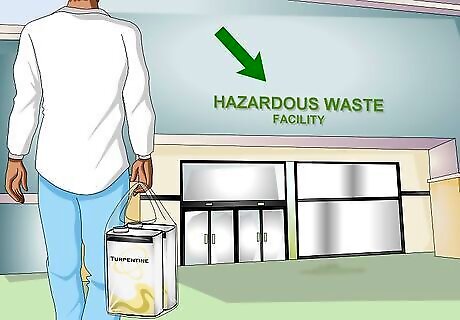
Take fuller containers of turpentine to your local hazardous waste facility. If you have more than ⁄4 inch (0.64 cm) of turpentine left in your container, take it to be disposed of as hazardous waste. Many cities and towns have locations where you can bring hazardous materials for safe disposal. In most cases, the hazardous waste facility will be at your dump or waste management facility. If you are not sure if there is a hazardous waste facility nearby, do an online search for one. If you find one nearby, you can also check their hours of operation online. If you have more than ⁄4 inch (0.64 cm) of turpentine in your container, you shouldn't just let it evaporate because the fumes are highly flammable. Letting a large amount of turpentine evaporate creates a fire hazard.
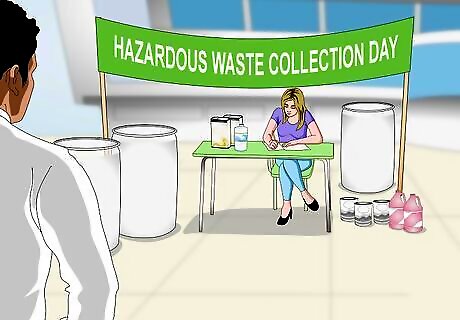
Look for a hazardous waste collection event in your area, if necessary. If you can't or don't want to go to a hazardous waste facility, hold on to your turpentine until a collection event occurs in your area. Many communities have events that are designed to make it easy to dispose of household hazardous waste, such as turpentine. In most cases, however, you will still need to take it to a location, like a city hall or local church, for disposal. Most hazardous waste disposal events will collect your products for free, as disposing of dangerous products properly is in the public interest. Store the turpentine properly until an event happens in your area. Keep it sealed, in a cool location, and follow any additional directions on the container it came in.Tip: Look for notifications in your mail or for informational signs around your town for when one is happening in your area. You can also call or check the website of your city, county, or local government to find out if they even have any plans for this type of event.
Disposing of Turpentine Soaked Rags and Other Items
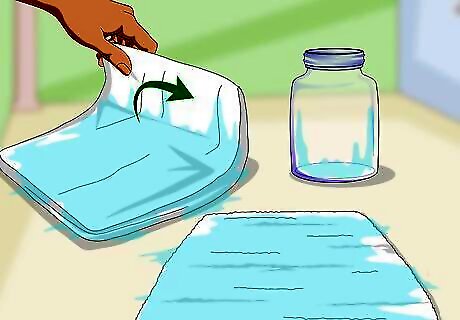
Lay out turpentine soaked items in a cool, well-ventilated area. Place rags, containers, and any other items that have turpentine on them on a non-absorbant surface out of direct sunlight. Try to get rags as flat as possible, so that they can dry out. A shady spot outside or a garage with an open door is a good location to do this. Turpentine fumes are flammable and toxic to breathe in high concentrations, so it's important to let it evaporate in a well-ventilated area.Tip: Put your items on concrete or steel, as these are flame-resistant materials that won't be ruined by coming into contact with turpentine.
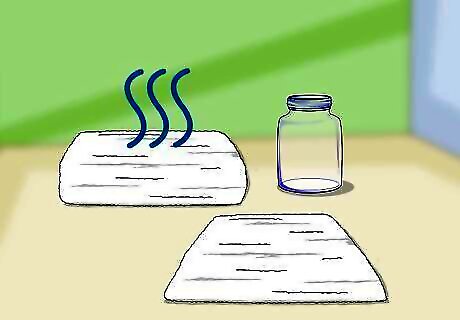
Allow the items to dry completely. Rotate items as they dry so that the entire item can dry out. Check on it after 15 minutes to a half-hour and rotate it if the top surface is dry. The total time for drying can take anywhere from a few minutes to a few hours, depending on how much turpentine was on the items. Turpentine covered items are no longer extreme fire hazards once they have dried out.
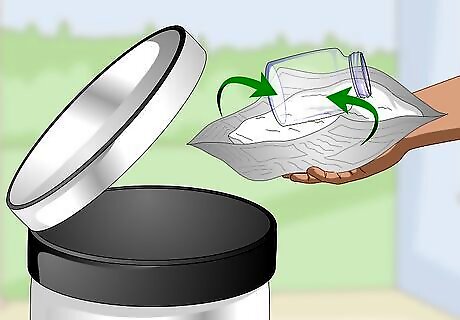
Put the dried-out items in your garbage can. Wrap them up in newspaper and then a plastic bag to keep them contained. Then put the package in your outside garbage can.
Reusing Turpentine
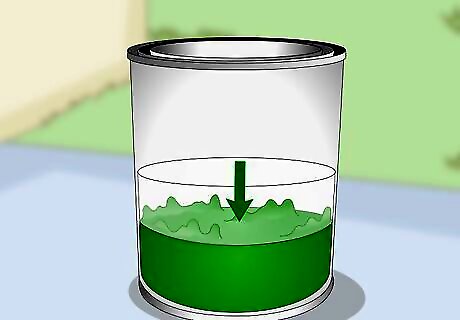
Allow the paint debris in your turpentine to settle. Turpentine that has been used to thin oil-based paint can be strained and then reused instead of being thrown away. However, you need to wait until the paint settles to the bottom of the container before filtering the turpentine. You will know all of the debris has settled when the liquid is very clear and the bottom of the container is covered with sediment. This can take weeks, so store the sealed turpentine container somewhere where it won't get hot and the container won't get broken while you wait for it to settle. For instance, this could be in a cool garage or basement.
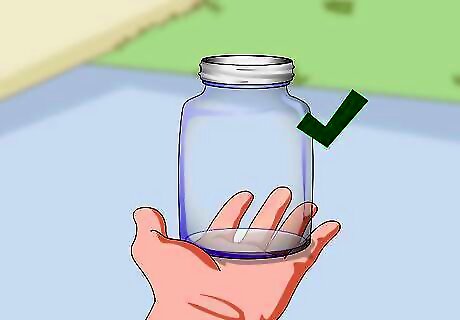
Get a second glass or metal container that has a tight-fitting lid. In order to strain the paint solids out of your turpentine, you will need another container that is big enough to fit all of the strained liquid. This will be the new container that your turpentine will be stored in, so make sure that it seals well and is clean. Label the container with the word “turpentine” before you start putting the product into it. This will ensure that everyone knows what is in the container.
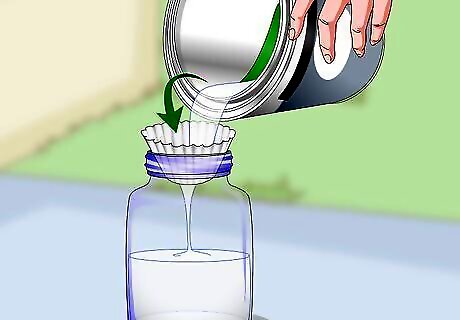
Strain the turpentine through a coffee filter. Place a paper coffee filter in the top of the new container. Slowly pour your turpentine through the coffee filter, being careful not to spill the turpentine or overfill the filter. Wait until all of the liquid has dripped through the filter before removing it. The filtering can go slow if you have a lot of paint debris in your turpentine.
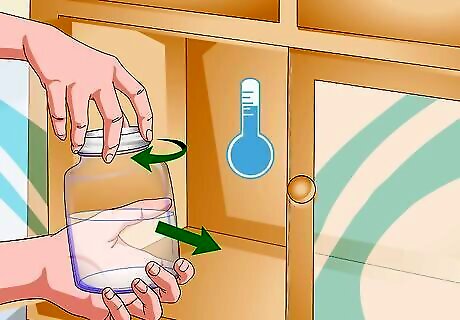
Seal the purified turpentine container and store it in a secure, cool place. Once you have filtered your turpentine, it is good as new and can be used as the brand new product was used. Store it in a safe place where the container will remain upright and will not be exposed to temperatures above 100 °F (38 °C).Tip: It is best to store turpentine in a flammable-materials cabinet to reduce the risk of it igniting. If you have a few flammable products around your home or shop, consider getting one in order to reduce the hazards related to these products.
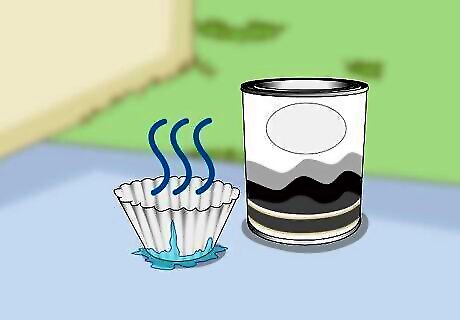
Let the coffee filter and used container dry out in a cool, well-ventilated area. Once your turpentine has been filtered, it's important to dispose of the old container and the filter correctly. Lay the filter out flat on a non-absorbent surface, such as on concrete. Set out the old container and lid separately as well. Wait for them to dry completely, which should only take an hour or two. Ensure that the container has less than ⁄2 inch (1.3 cm) of paint debris and turpentine at the bottom before putting it out to dry. If it has more than that, it needs to be disposed of as hazardous waste. Locations that typically provide a lot of ventilation include a shady spot outside and a garage that has the door open. It's important that these items are allowed to dry out in a cool area that is well ventilated because the fumes that are released are highly flammable.
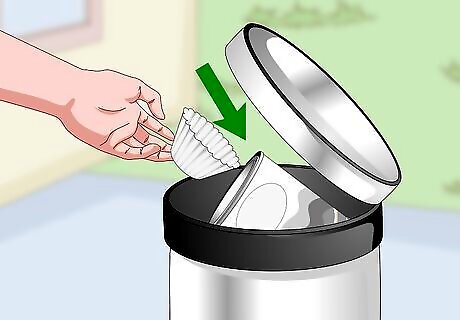
Throw the coffee filter and used container in your garbage can. Once there is no liquid turpentine visible on them, they are no longer considered hazardous materials. Wrap them in newspaper and then put them in a plastic bag. This bag can be put directly into your garbage can without being a fire or hazardous chemical risk.



















Comments
0 comment